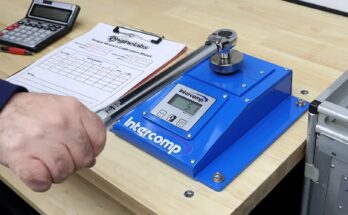2025 marks a year of rapid shift towards remote work in many industries, but this is not without debates on privacy, ethics, and the use of AI in monitoring employees. With the increased implementation of AI-driven surveillance measures to monitor remote employees, there has been a buildup of hesitation and dissatisfaction among employees and other privacy advocates.
This created a dilemma regarding productivity standards and human dignity that would redefine the modern and digitalized workplace. So, let’s see the numerous ethical implications of modern employee monitoring, the changes in legal protocols, and how organisations are working to maintain the right equilibrium between remote monitoring and employee autonomy.
Emergence of AI-powered monitoring tools
Since the COVID-19 pandemic, there has been a global shift in remote work, making AI-driven surveillance tools more prevalent and sophisticated. And in 2025, these advanced technological solutions will have become an essential component for daily business operations, rather than just being optional.
Many popular and reliable remote worker monitoring tools, like Insightful.io, offer users essential features, including idle time detection, keystroke logging, facial recognition, and sentiment analysis from chats and emails. These platforms aim to secure sensitive organizational data, decrease the case of ‘time theft’, and boost productivity as a whole. Yet, their implementation within the current work systems is often non-consensual and opaque, leading to ethical gray zones in the workplace.
One of the main reasons for such concerns is operating this monitoring software in stealth mode, without employees’ consent and awareness of being monitored and recorded. This highlights a crack in workplace beliefs, creating a dynamic of declining work productivity rather than enhancement.
Ethical dilemmas and employee backlash
The ethical dilemmas of AI-driven workplace surveillance lie in these key questions: What constitutes reasonable and ethical monitoring? Where is the boundary between privacy protection and invasion?
Ethical concerns:
- Consent and autonomy: In most organisations, employees are given little regard for their opinions and consent on the use of monitoring tools, resulting in the buildup of perceptive surveillance and coercive control.
- Digital panopticon: Constant monitoring is bound to have a psychological impact, termed as ‘panopticon effect,’ where workers tend to adjust their behaviour due to the sense and fear of being watched.
- Biased algorithms: AI tools are flawed on many levels, like biased or inaccurate data can lead to misanalyzed employee behavior and unfairly flagged actions, which tentatively affects the marginalized groups more.
Moreover, various surveys conducted in 2024 revealed that on average, about 62% of remote employees were being monitored without being informed. They were unaware of monitoring software installed on their work devices or were unsure of where and how their data was being used. Such cases created huge employee backlash, leading to social media campaigns, lawsuits, and many unionization efforts, specifically among Gen Z employees, actively advocating for workplace reform.
Comparative analysis: AI surveillance vs. Employee privacy Rights
| Aspects | AI-driven surveillance | Employee Privacy Rights |
| Objective | Reduced data leaks, maximized productivity | Protect autonomy, dignity, and mental health |
| Transparency | Often limited or absent | Informed consent, advocates demand clear |
| Data collection | audio/video feeds, screen time, communication, keystrokes | Minimized records of personal identifiers |
| Technology used | Facial recognition, behavior analytics, bossware | Opt-in tracking, Privacy-by-design software |
| Trust impact | Increased attrition, damaged morale | Promotes engagement and loyalty |
| Regulation | Minimal or light regulation in most nations | Growing legal protocols, like State laws, GDPR |
Growing privacy-centric regulations
The global legal landscape is increasingly considering the severity and impacts of the growing ethical aspects of remote worker monitoring tools, leading to a positive rise in privacy-centric guidelines.
United States
The Labor Federation in California is actively advocating for the restricted use of AI-driven tools in remote work environments. The objectives of these altered bills and new legislations are to ensure the use of monitoring tools only during working hours and to strictly limit tracking and collection of any non-work-related data.
European Union
The EU’s General Data Protection Regulation (GDPR) remains the gold standard for employee privacy and rights, requiring transparency, explicit employee consent, and data minimization. For organisations operating in the EU, if they fail to adhere to GDPR guidelines, they would have to face heavy repercussions or penalties. Moreover, employees are educating themselves and getting increasingly aware of their workplace rights.
Global momentum
Countries like the UK, Australia, and Canada are now introducing new workplace-specific privacy mandates, mirroring the EU’s GDPR protocols. The International Labor Organisation (ILO) is also drafting new privacy guidelines on ethical remote worker monitoring for member states.
The human cost of Productivity vs. Well-being
Despite organisations frequently citing improved productivity as a core justification for workplace surveillance, several research studies uncovered a rather counterproductive pattern:
- A Harvard Business Review study of 2024 revealed that constantly monitored employees were 32% more likely to resign from their jobs within a year than those working in non-surveilled work environments.
- More than 60% of remote employees reported increased job dissatisfaction in the presence of AI-driven monitoring tools.
- Informed employees who are aware of being monitored were more likely to face burnout, increased stress, decreased creativity, and avoidance behaviours, resulting in hesitation or limited screen exposure by avoiding nonessential interaction or collaboration.
This is a sign that despite numerous perks and metrics detection capability of monitoring tools, it often creates unwanted factors among high-performing employees, like reduced innovation, trust, and work engagement.
Building a middle ground to overcome the dilemma
To address the increasing dilemma, organisations are being proactive and turning to ethical monitoring tools and polices that will empower employees as intended instead of policing them.
- Consent-centric frameworks: Organisations are adopting the “ask-first” approach and even co-drafting company monitoring polices with employees. This participatory model enables organisational goals to align with employee expectations.
- Behavioral nudges rather than policing: Many monitoring tools prioritize performance feedback loops and employee well-being rather than constant and discreet surveillance, promoting tailored coaching and positive reinforcement.
- Aggregated data models: Focusing on aggregated data models rather than individual tracking helps managers determine team-level barriers without intruding on privacy boundaries.
Final words
The ongoing debate on AI-driven monitoring vs. employee privacy is more than just about technology and its features, it’s also about considering workplace and individual values. In 2025, organisations still face the dilemma of micromanagement, or to thrive the business based on fairness, transparency, and mutual respect. Nonetheless, the solution lies in readapting and redefining the implementation of remote worker monitoring with ethics, empathy, and shared responsibility.



